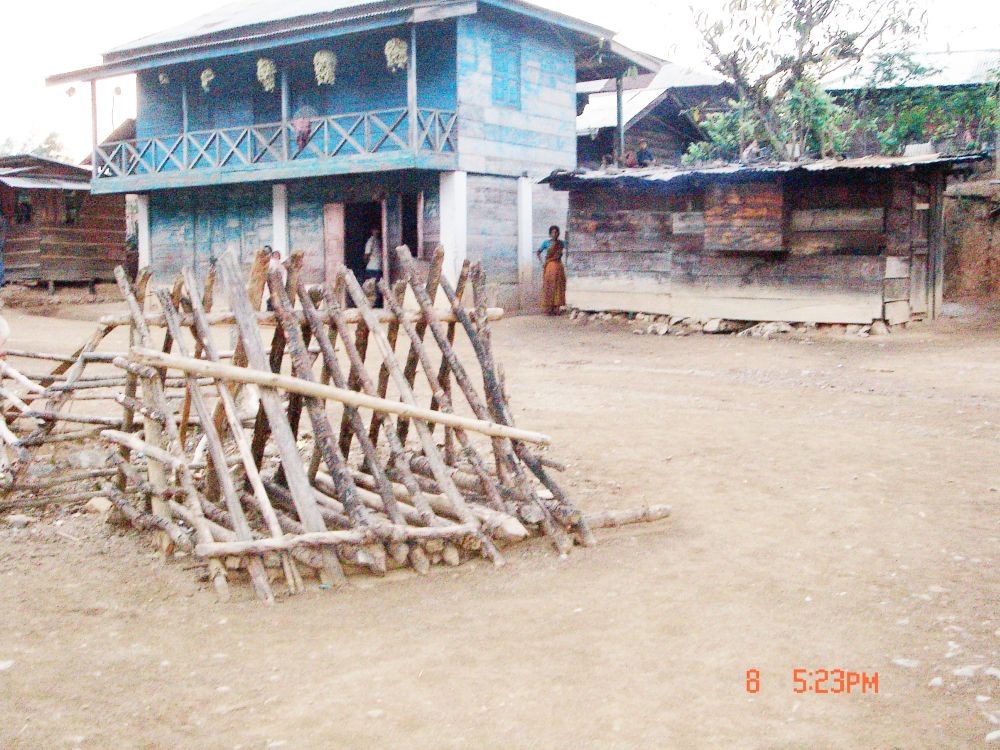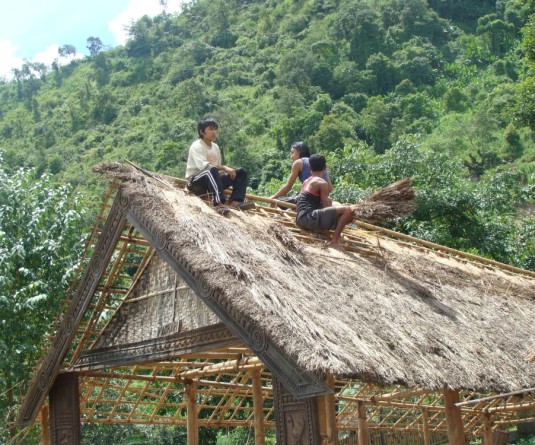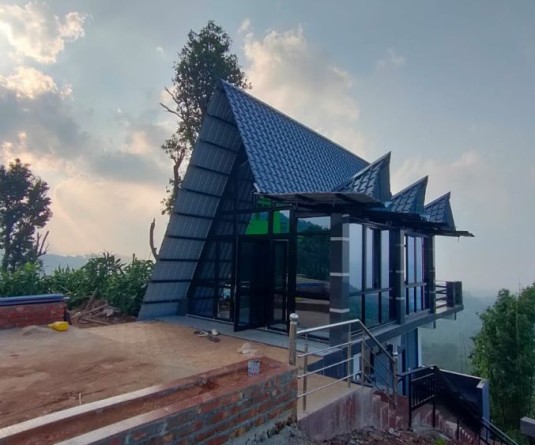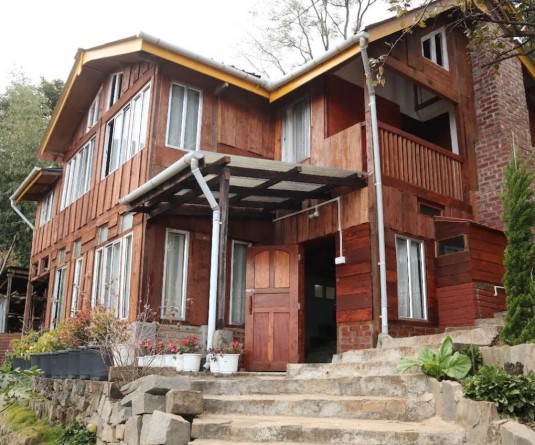Moya village “jail” stands at the heart of the village as a warning for all. (MExPix)

Bonnie Konyak
Moya/Kiphire | April 13
Nestled in the middle of nature’s serenity, detached from the materialistic chase, hidden from its other counterparts, flourishes the village of Moya, some 60 kilometers from Kiphire town. This Yimchunger village, despite its daily struggle for survival, brings out the distinct sense of the unadulterated Naga living, complete with all the pride, arrogance, humor and the hospitality. A trip to this isolated haven was akin to an experience on the ‘time machine’ transporting me to a world that once had belonged to the Nagas and was now, fast fading.
Cultivating corn and beans in its rocky hills, the villagers challenge nature for their survival and find satisfaction in the simplicity of their lives. The concept of market has not found popularity in the lives of these proud people who are reluctant to sit in some nearby towns and sell their products. Hence there is little motivation to increase the productivity of their crops and the added problem of transportation facility deters any such efforts. It is the land of a people who make do with what is available, a people who have learnt the art of improvising instead of complaining, a people who are unaware of what they don’t have and unaffected by it.
An unforgettable experience was that of the Maga Customary Court, Moya Village around which the all the activities of the village revolve. Cases are discussed, decisions passed and punishment executed in the court by the council members and GBs who have a strong hold over the village affairs. A tiny enclosure made of wood is the “jail” erected right in the middle of the village where the guilty are made to spend a few hours in a very uncomfortable position.
The court also seemed to be the usual place for merrymaking and celebration, though any place, anytime and any excuse for a celebration was welcomed by these fun-loving people. Local beer made of corn and Burma Rum from across the borders are the beverages commonly served at such a time and the villagers sing haunting folk songs, the words of which always seemed to fit that moment in time. Another popular entertainment was the Chinese songs and dances which had been learnt by some of their elders who had been in China for training during the early years of the Naga freedom struggle. The sight of the early leaders contented in a life of anonymity, the beliefs they once bleed for tucked away into memories, seemed symbolic in the undisturbed quietness of those hills.
In the modern sense of civilization, Moya village lacked most of the facilities that make up a cultured society. The 6-bedded, Primary Health Centre which was inaugurated last year is an empty building with no furniture, medicines or staff; there is no landline telephone connection or mobile network; no high school for the children to pursue higher education etc; yet in everyway, Moya was an epitome of the ideal society, untouched as yet by the mad rush, unscathed until “development” seeps into these last remnants of Naga legacy.






